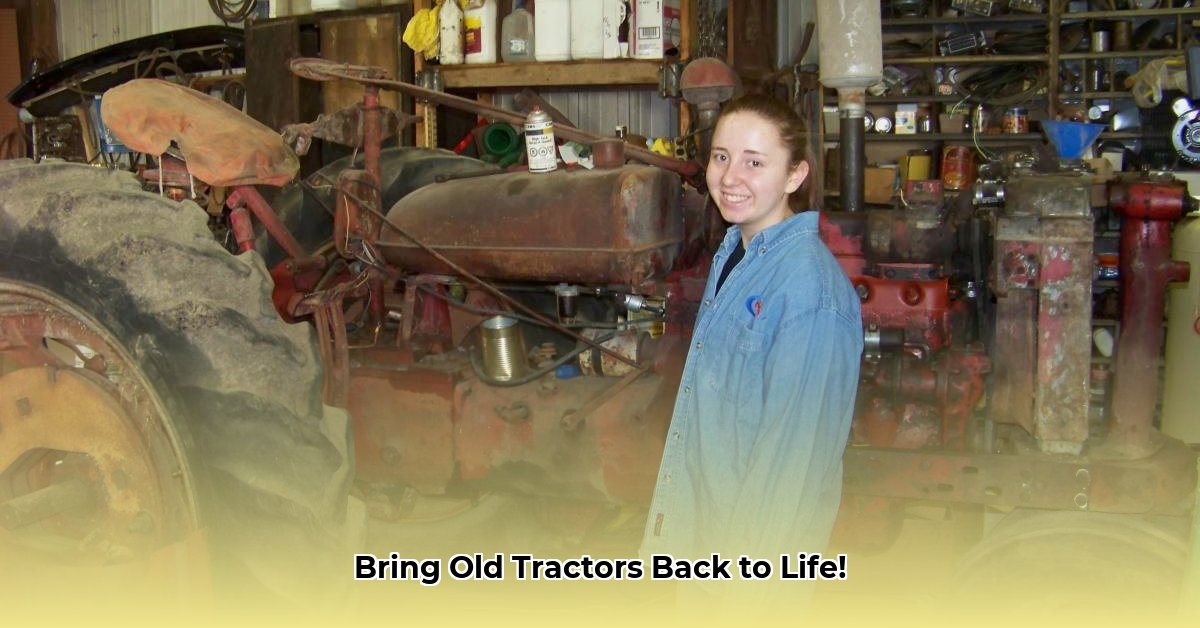
So, you've inherited a rusty old tractor, or maybe you've found a barn find that's calling your name. Restoring a classic tractor is a challenging but deeply rewarding project. This comprehensive guide will walk you through the process, step-by-step, making it achievable even for beginners. Let's get that old workhorse back in top condition! Before you begin, ensure your tractor's generator is functioning correctly; see generator testing for guidance.
Assessing Your Tractor: The Initial Inspection
Before you touch a wrench, thoroughly inspect your tractor. Document its condition with many photographs and detailed notes. Is the engine seized? What's the state of the transmission and electrical system? Are there major rust areas or damage? This initial assessment will determine repair needs, part sourcing, and the project’s overall scope. Have you considered what unique challenges this particular tractor model might present? (This initial assessment is crucial for accurate budgeting and scheduling.)
Step 1: Disassembly – A Methodical Approach
Disassembly is like peeling an onion – layer by layer. Take detailed photos before removing any parts. This is your visual roadmap for reassembly. Carefully label and bag every component, noting its location with waterproof tape and a permanent marker. Using a numbering system can prove incredibly helpful. A thorough cleaning of each part after removal is essential for assessing damage. Consider using a wire brush, degreaser, and compressed air. (This step alone can take several days or even weeks, depending on the tractor’s condition.)
Step 2: The Parts Quest – Sourcing and Repair
Finding replacement parts can be the most challenging and time-consuming aspect of the restoration.
Inventory: Create a complete inventory of needed parts, including part numbers if possible. This is crucial for effective sourcing.
Online Marketplaces: Explore online auction sites (like eBay) and specialized tractor parts websites.
Salvage Yards: Check local tractor salvage yards for used parts. You may find exactly what you need at a fraction of the cost of a new part.
Dealerships: Contact agricultural equipment dealerships; they might have parts or know where to find them.
Repair Before Replacing: Repairing existing parts, when feasible, can significantly reduce costs and preserve the tractor's originality. Welding, metal fabrication, and other repair methods may prove invaluable. (Finding the right parts can be a frustrating but ultimately rewarding aspect of restoration.)
Step 3: Engine Overhaul (When Necessary)
Engine work should be left to professionals unless you have significant mechanical experience. However, if tackling it yourself, a methodical approach is vital:
Assessment: Determine the engine's condition; a simple tune-up might suffice, or a complete rebuild might be necessary.
Disassembly: If a rebuild is needed, systematically disassemble the engine, taking detailed photos and notes at each stage.
Part Replacement: Replace worn components (piston rings, bearings, gaskets, seals) with high-quality parts.
Reassembly and Testing: After reassembly, carefully test the engine's operation. (Engine work is arguably the most technically demanding part of a tractor restoration.)
Step 4: Reassembly – Putting it All Back Together
Reassembly is the reverse of disassembly, but even more challenging. Your detailed photographs and notes are indispensable here. Work methodically, double-checking everything. Testing individual systems (electrical, hydraulic, braking) as you go helps prevent major problems down the line. (This is where patience and attention to detail truly pay off.)
Final Testing and Commissioning
Once reassembled, thoroughly test every system. This includes a comprehensive engine test, operation checks of the transmission, hydraulics, steering, and braking.
Tips for Success
- Patience: Tractor restoration is a marathon, not a sprint.
- Seek Help: Join online forums and consult with experts.
- Document Everything: Photos, diagrams, and notes are vital.
- Budget Wisely: Tractor restoration can be expensive.
Conclusion: The Reward of Restoration
Restoring a classic tractor is a demanding but intensely satisfying undertaking. This guide will provide a solid framework, but remember that each project presents its unique set of challenges. The result, however, is a piece of machinery with a renewed purpose and a rich history, a testament to your dedication and skill. Enjoy the journey!